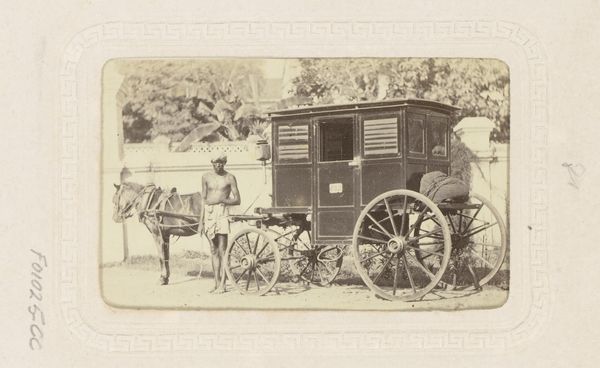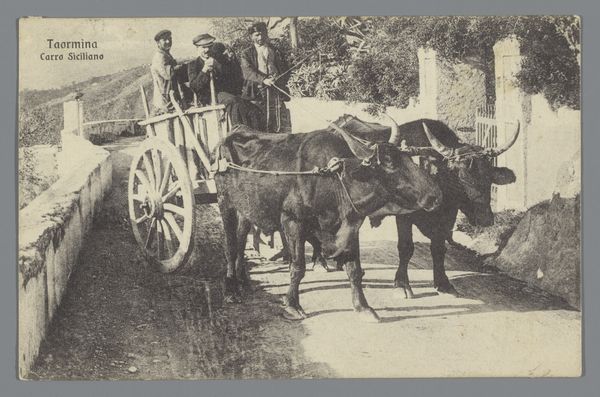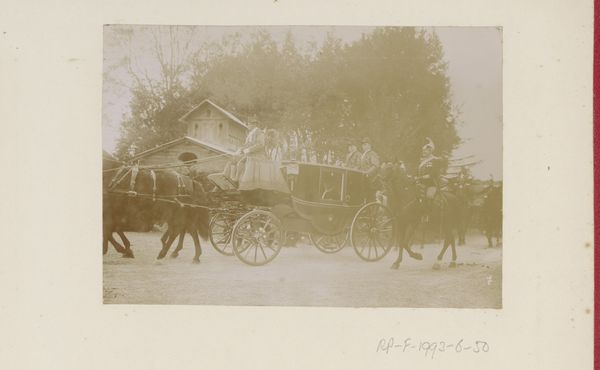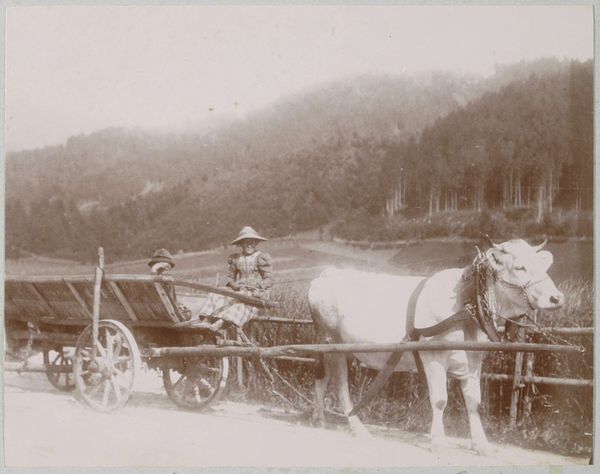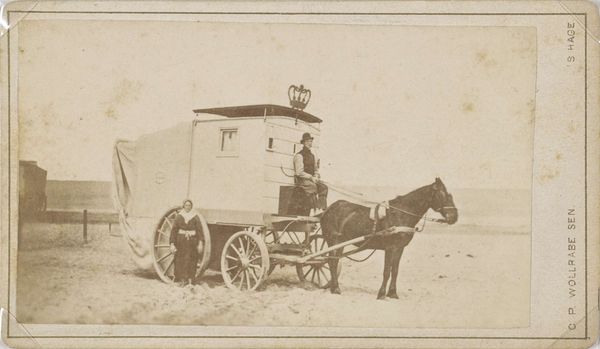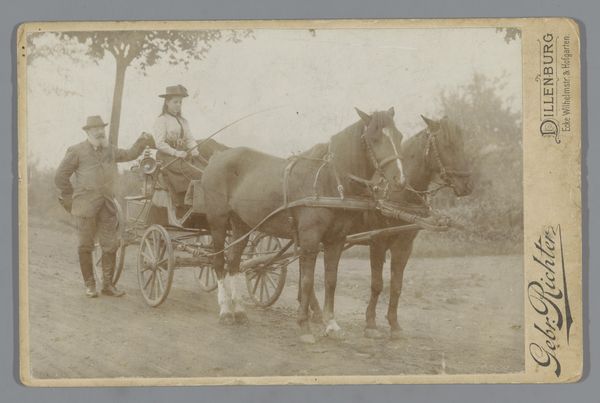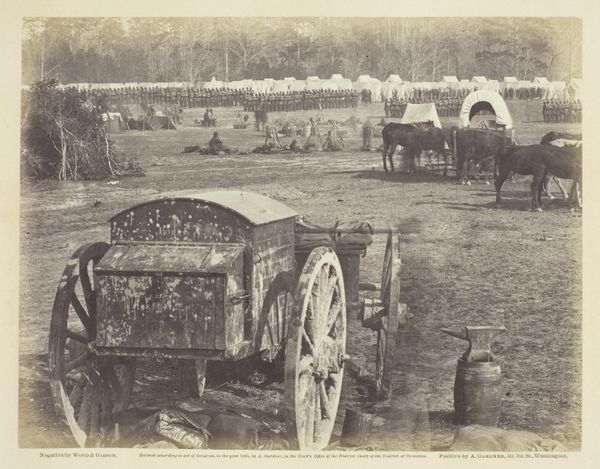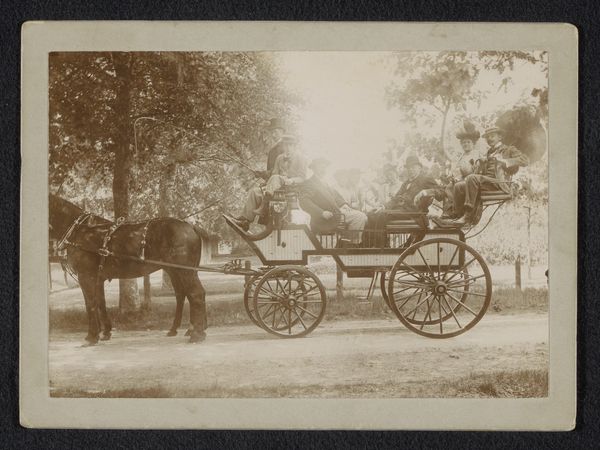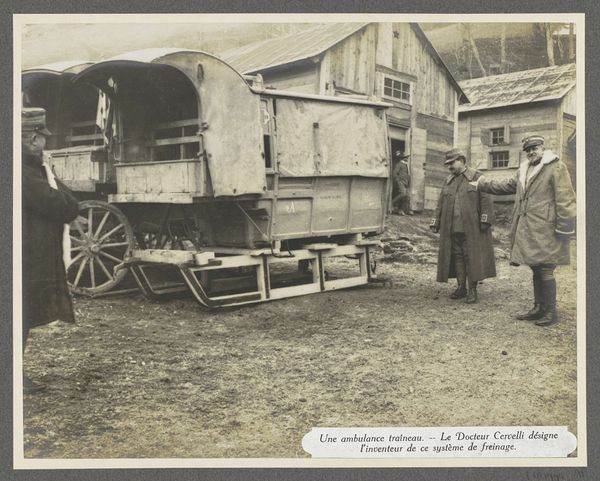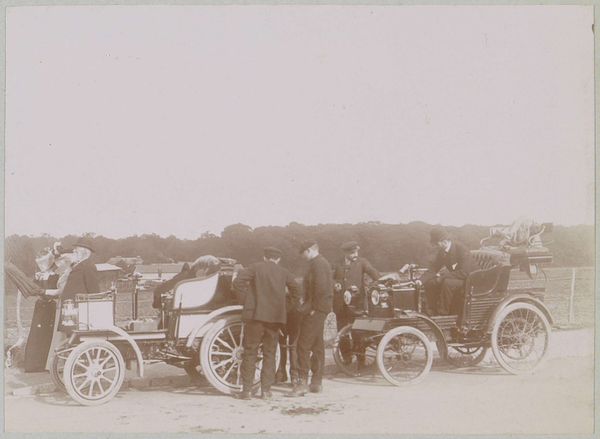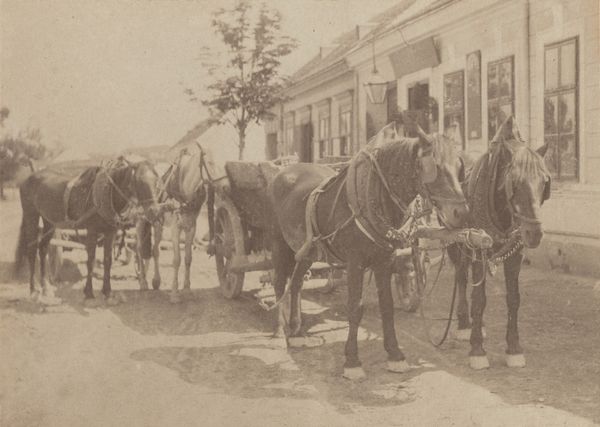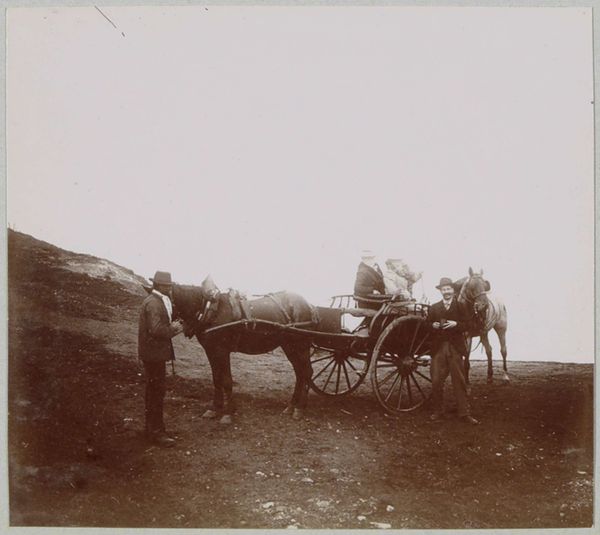
Vermoedelijk Italiaanse militair vervoert munitie met een boerenkar in de Dolomieten 1916
0:00
0:00
photography, gelatin-silver-print
#
landscape
#
archive photography
#
photography
#
historical photography
#
gelatin-silver-print
#
genre-painting
Dimensions: height 220 mm, width 280 mm
Copyright: Rijks Museum: Open Domain
Curator: This gelatin silver print, taken in 1916, offers a glimpse into the First World War through an unconventional lens. The title suggests we're looking at "Presumably Italian Soldier Transporting Munitions with a Farm Cart in the Dolomites." Editor: It's a striking image. The mood is so subdued, almost serene. You have this powerful war machine subtly present but the dominant feeling is pastoral. A contrast heightened by the pale, almost faded, tonality. It reminds us of war's insidious intrusion into daily life. Curator: Indeed, the contrast is key. Notice how the horse and cart, symbols of agrarian life, are juxtaposed with the munitions, these instruments of destruction. The photographer, believed to be Henri de Rothschild, masterfully uses these images to speak of both the conflict and a sense of enduring cultural patterns of everyday existence in a landscape marked for war. Editor: And the horse seems so weary, its head bowed as if burdened by more than just the physical weight of the munitions. This is such a potent symbolic connection, using animals, which represent both the natural world and the burdens of work and suffering, becomes really memorable and really impacts the whole feel of the piece. Curator: It does make you wonder about the social impact too, and the extent to which resources—horses, carts, civilian labour—were commandeered to serve the war effort, disrupting rural economies and communities. It speaks volumes about how conflict changes societies from top to bottom, beyond battlefields. The scale of the backdrop reminds you of that, dwarfing man, horse, and cart under a looming mountain, a silent witness to generations of human conflict and existence. Editor: Exactly. The photo evokes a sense of the overwhelming weight of history and the enduring strength, but also perhaps, vulnerability, of a pastoral existence confronted by modernity and military upheaval. What a telling artifact—more than a century later, its layers resonate. Curator: Yes, reflecting on that paradox is incredibly insightful. It challenges us to understand war not as an isolated event but as an integral part of history.
Comments
No comments
Be the first to comment and join the conversation on the ultimate creative platform.
